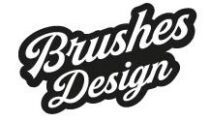This post is also available in: Español (Spanish) Português (Portuguese (Brazil))
Can having a website and blog really help you land your first design client without spending on paid ads? Although it may seem difficult, the answer is yes. Many freelance designers have secured their first projects thanks to a well-optimised site, helpful content, and a smart digital strategy. In this article, I’ll show you exactly how to do it.
Why this method works (and why many don’t try it)
Today, most designers believe that to get clients, they need to pay for ads or sign up for overcrowded freelance platforms. But if you build a website that speaks directly to your ideal client and publish content that solves their problems, you can achieve something even better: clients will come to you.
This approach is not only possible but positions you as an expert from day one. And best of all: it scales without added costs.
Understanding the client before designing the site
Before thinking about your portfolio or blog, you must clearly define who your ideal client is.
Ask yourself these questions:
What type of business do I want to sell design to?
What problem do I solve for them?
How would they search for solutions on Google?
This is a crucial step. If your site doesn’t speak directly to that person, no matter how attractive it looks, it won’t convert.
How to structure your website to attract clients
Your website should be simple, fast and clear. These sections are essential:
1. Home Page
Clear message: who you are, what you do, and how you can help.
A visible CTA (Call To Action): contact me, book a call, etc.
2. Portfolio
Feature 3-5 projects that represent the kind of work you want to offer.
If you don’t have real clients yet, create fictional (but well-executed) case studies.
3. About Page
Share your story in a human and professional way.
Show why you’re trustworthy and understand the client’s world.
4. Blog
Articles crafted to attract real searches (we’ll go into this below).
Using your blog to attract your first client
Your blog is your most powerful tool. If you write content that answers what your client is searching for on Google, you stand a real chance of getting found — no ads needed.
What kind of articles to write
Common problems your clients face (“How to update a logo without losing your brand identity”).
Comparisons (“Professional design vs free templates: what’s the real difference?”).
Case studies or hypothetical examples (“How a rebrand could help a local bakery attract more customers”).
Basic SEO for your articles
Use titles with real keywords your audience might search.
Keep your paragraphs short and to the point.
Add optimised images with descriptive alt text (e.g., “logo redesign for small business”).
How to connect your blog and website with simple actions
Publishing content is not enough. You need to promote it. Here are some effective ways:
Share your posts on LinkedIn and Facebook.
Reach out to key people who might benefit from your content.
Comment on other blogs or forums and include your link when relevant.
Real stories: what happened when designers applied this
Designers who followed this approach often reported finding their first leads within three months. In most cases, the blog served as the entry point, and trust was built through a clear portfolio and professional messaging.
One designer published an article titled “5 branding mistakes I see in small cafés”. A week later, a coffee shop contacted him after recognising themselves in the post. No ads, no middlemen.
Common mistakes when using this method
Writing for other designers instead of potential clients.
Not having a clear goal for each article.
Ignoring metrics that show what’s working.
Tools to boost your chances
Ubersuggest: to find long-tail keywords.
Google Search Console: to see what searches bring traffic to your site.
Answer The Public: to generate content ideas based on real questions.
Recommended links:
Conclusion: Yes, it’s possible (but it takes consistency)
Finding your first client as a graphic designer using only your website and blog, without paid advertising, is 100% achievable. The key lies in understanding your client, speaking their language, offering helpful content, and optimising everything for search engines.
This method isn’t magical or instant, but it lays a solid foundation. And if you still haven’t landed your first client, maybe you’re just one blog post away.
